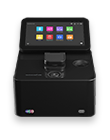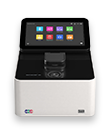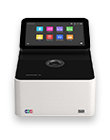What is a Protein UV Spectrophotometer
How to Measure Protein UV Concentrations
The Protein UV method exploits the inherent absorbance of proteins at 280 nm in combination with the Beer-Lambert law, where each protein is characterized by a specific extinction coefficient (ε) which can be used to determine total protein concentration of a solution. The intrinsic absorbance of proteins is due to the presence of aromatic amino acids in their structure, primarily tryptophan and tyrosine, as well as cysteine (oxidized cysteine residues in a disulphide bond). The aromatic amino acid residues in a protein containing tryptophan and tyrosine exhibit strong intrinsic absorbance at 280 nm, with a lesser contribution by phenylalanine. Therefore, it is the aromatic amino acid residues which dictate the extinction coefficient at 280 nm for a protein.
The most straightforward method to determine concentration of a purified, homogenous protein with a known extinction coefficient (ε) is by direct measurement of UV280 provided the protein contains no prosthetic groups with strong absorption in the same region. However, for unknown proteins including homogenous protein mixtures, it is possible to make direct A280 measurements using a composite ε value derived from comparison of many proteins, although this will only provide an approximate but close estimate of the true protein concentration.
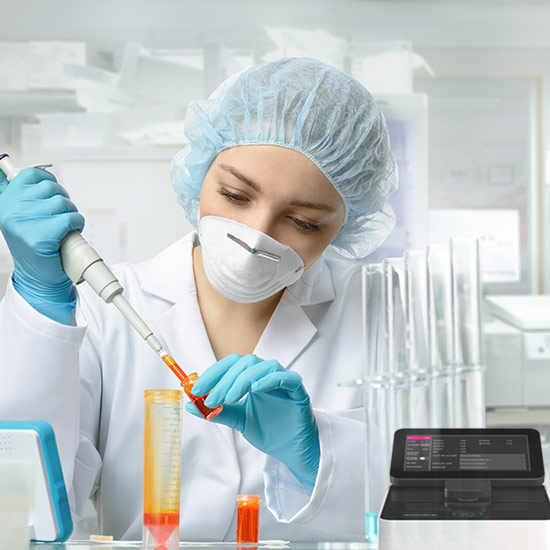

The NanoPhotometer®, one of the top Protein UV Spectrophotometers on the market, determines protein concentration by performing calculations based on specific ε values, either pre-programmed in the instrument or entered manually by the user. Extinction coefficient (ε) values at 280 nm vary greatly for different proteins due to their particular aromatic amino acid content.
Fixed ε values are pre-programmed in the software of the Protein UV Spectrophotometer for several proteins. However, if the protein of interest is not included in the pre-programed methods, it is also possible to manually enter the specific ε for the protein of interest using the custom Mol. Ext. Coefficient, custom Ext. Coefficient or custom 1/Ɛ protein factor option. For correct calculation, it is necessary to supply either: a) the molar extinction coefficient (εM in M-1 *cm-1 ) and the molecular weight expressed in molar mass units (g/mol); b) the mass extinction coefficient (ε in l/g*cm) or c) the protein factor 1/Ɛ of the protein.
A common calculator to determine the extinction coefficient of proteins is available here:
To calculate the degree of dye labelling of a protein, the absorbance measured at the wavelength corresponding to the absorbance maximum of the fluorescence dye is used. The corresponding extinction coefficient of the dye is used along with the Beer-Lambert law to determine the dye concentration. Please refer to the manual of the manufacturer of the fluorescence dye used for the labeling of the sample.
Wavelengths for Measuring Protein UV Concentrations
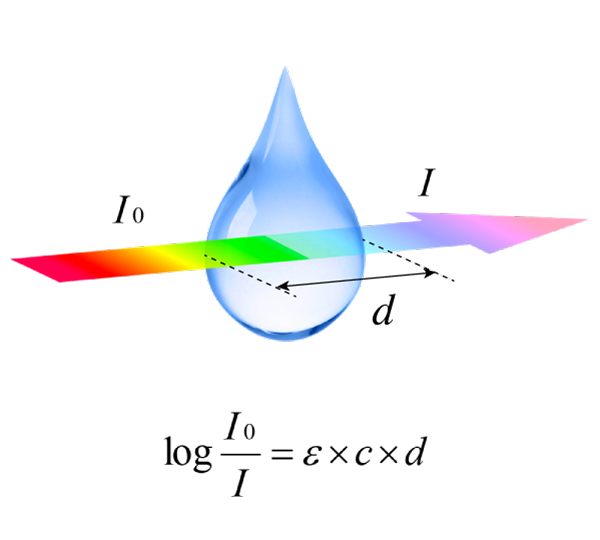
What is 260/280 ratio?
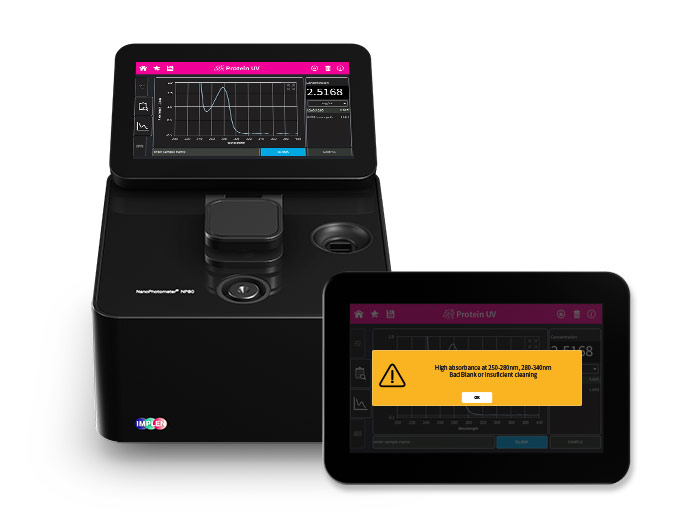
Protein UV Quantification with NanoPhotometer® NP80
Let’s cover the performance of the NanoPhotometer® NP80, top Protein UV Spectrophotometer, in terms of linearity and accuracy, applying small volume protein quantification at 280 nm (Protein UV280). Protein samples display a characteristic absorption spectrum at 280 nm, predominantly from the aromatic amino acids phenylalanine, tyrosine, and tryptophan. The Lambert-Beer law can be applied to determine the protein concentration in a sample. This UV based approach depends strongly on the purity and primary sequence of a protein. Some components which are commonly present in protein samples show strong UV absorbance, and should be corrected for or avoided altogether. The NanoPhotometer® unique feature Blank Control™ will automatically warn the user if high background is present in a blank from buffers or contaminants.
Material & Methods
Bovine serum albumin (BSA) solution A7284 (Lot. SLBP4169V) from Sigma-Aldrich was used as stock solution. Different sample concentrations were achieved by dilution with defined amount of 1x PBS buffer. The dilution ratio was controlled by weight via microbalance (Sartorius BP221S). Expected absorbance values were measured in 10 mm quartz glass cuvettes (Hellma Analytics 100-QS) with UV/VIS spectrometer UVIKON XL (serial number 110178). All measurements were done on the Protein UV Spectrophotometer, NanoPhotometer® NP80 (serial number M80706).
Each protein concentration was measured using Protein UV Spectrophotometer NP80 five times without prior dilution using a sample volume of 1 μl. Each sample was vortexed before every measurement to ensure sample homogeneity. After each measurement, the pedestal and the lid of Protein UV Spectrophotometer NP80 were cleaned with a slightly wet lint free tissue and a new aliquot of the sample was pipetted.
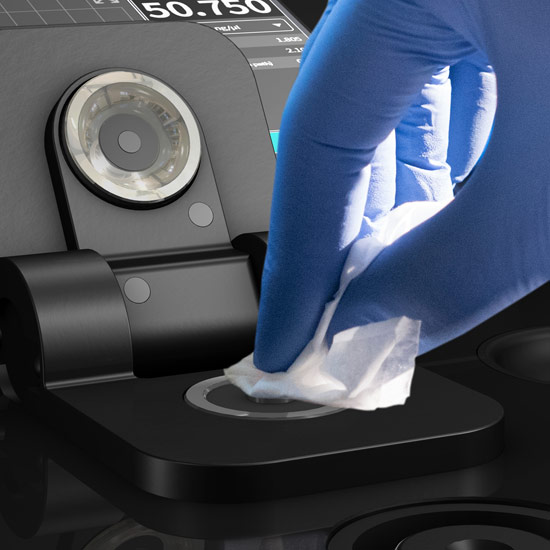
Precision and Accuracy of the Protein UV Spectrophotometer Measurement Results
Accuracy Results
The expected protein concentration was compared to the mean value of the five measured concentrations of each protein samples (Table 1). Additionally, the standard deviation of the mean absorbance at the 0.67 mm / 0.07 mm path of each sample is listed.
Linearity Results
The resulting linearity curve in the range of 0.0380 – 276.98 mg/ml shows a close correlation between expected and measured concentrations with a coefficient of determination (R2) of 0.9997 (Figure 1). Figure 2 shows the linearity for low concentration samples measured with path length 0.67 (dilution factor 15).
Ratio
The Protein UV Spectrophotometer, NanoPhotometer® NP80, calculates the 260/280 ratio which accounts for contaminants in the sample. The 260/280 ratio primarily indicates the presence of nucleic acids in the protein sample. Purified protein preparations have an expected ratio of around 0.57. Protein samples used within this technical note had 260/280 ratios between 0.585 and 0.636 for concentrations in a range of 0.705 – 276.8 mg/ml. Figure 3 shows the linearity of high concentrated BSA samples in the range of 68.326 – 276.98 mg/ml.
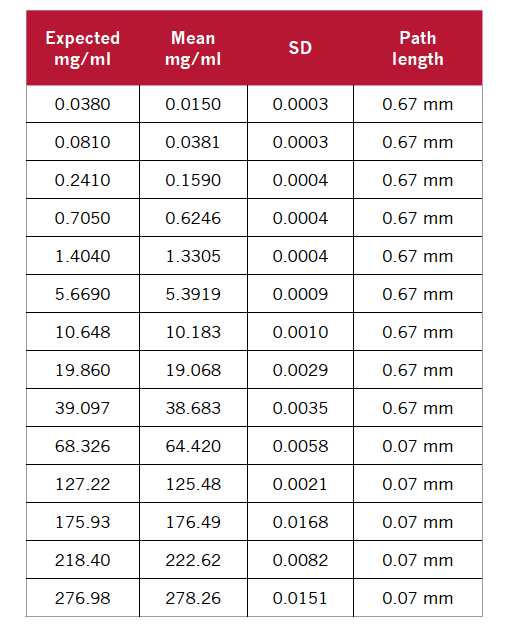
Table 1. NP80 Expected vs. Measured Protein Concentrations
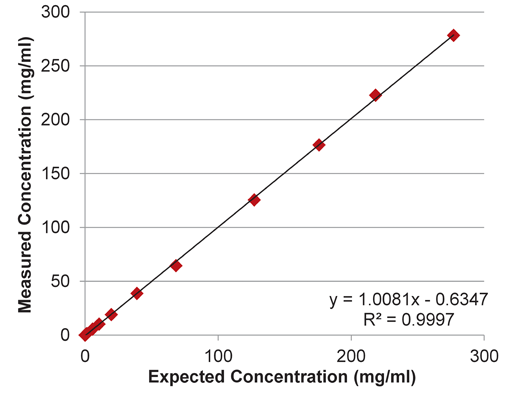
Figure 1:
Protein samples (mean value) in the range of
0.038 – 276.98 mg/ml
measured with the NP80 using
automatic path length selection.
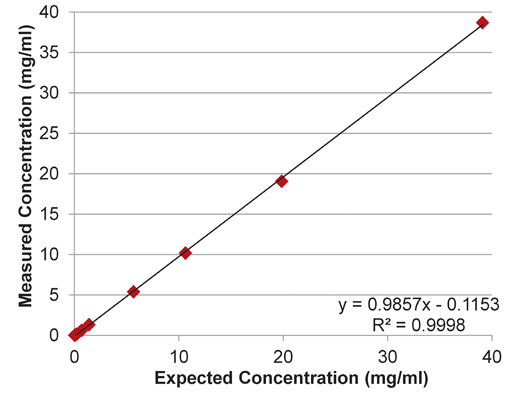
Figure 2:
Protein samples (mean value) in the range of
0.038 – 39.097 mg/ml
measured with the NP80 using
path length 0.67 mm.
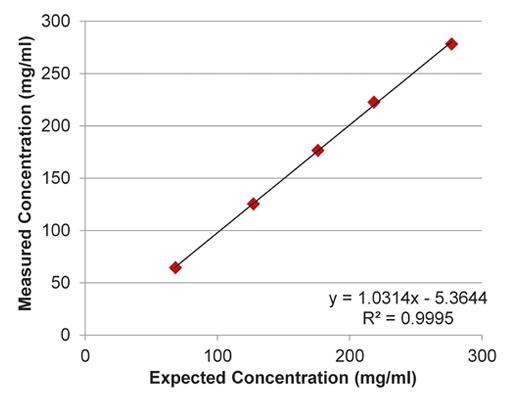
Figure 3:
Protein samples (mean value) in the range of
68.326 – 276.98 mg/ml
measured with NP80 using
path length 0.07 mm.
Carryover
Highly concentrated protein samples are known to be sticky. To show that cleaning with just a slightly wet lint-free tissue is appropriate, the blank solution (1x PBS) was measured five times after the final protein sample reading. No residual concentration of protein or absorbance at 280 nm was detected (Figure 4). The absorbance at 280 nm (0.67 mm path) is within the specified fluctuation of the lamp (± 0.002 A).
Figure 4:
No carryover was detected. Absorbance at 280 nm (0.67 mm path) of five 1x PBS measurements measured after the last protein sample.
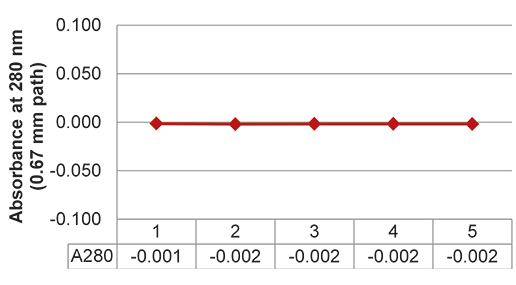

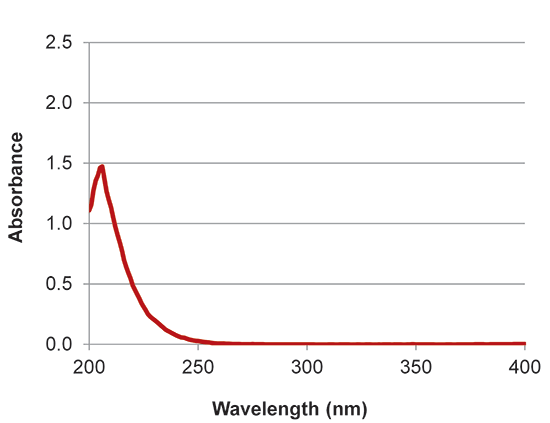
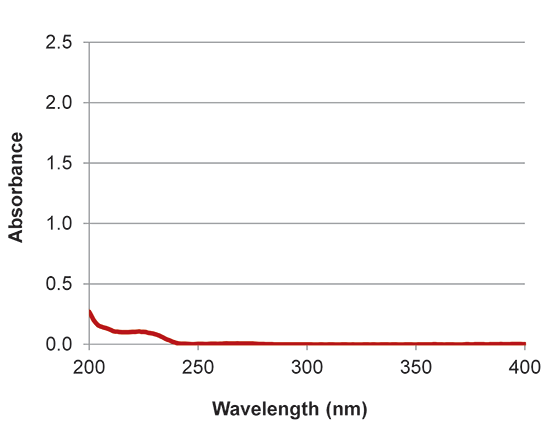
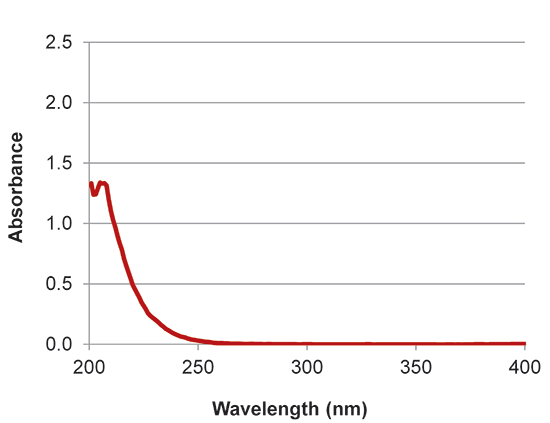
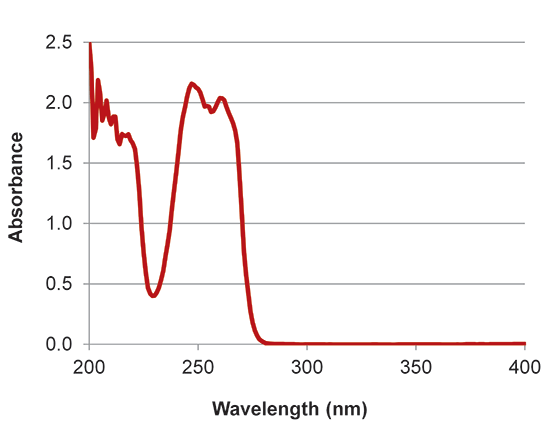
DTT
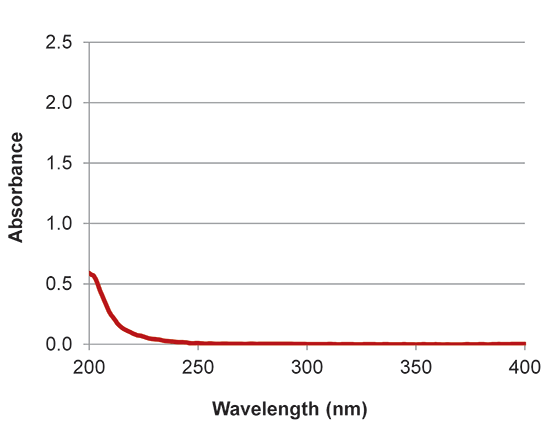
RIPA
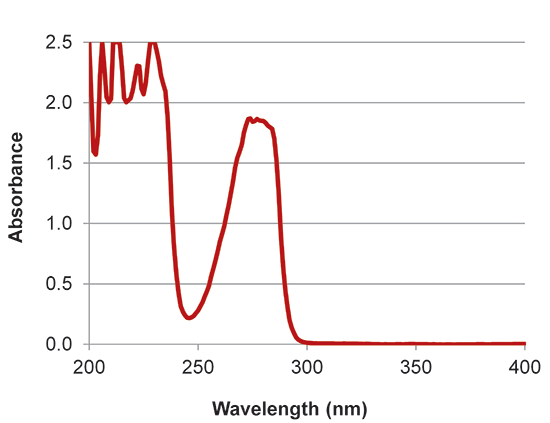
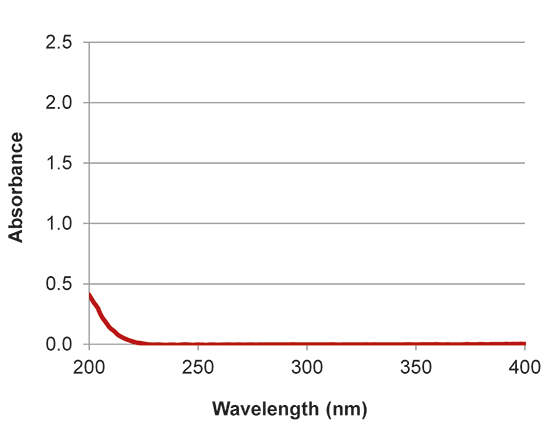
Accuracy and Linearity of the NanoPhotometer®, Protein UV Spectrophotometer
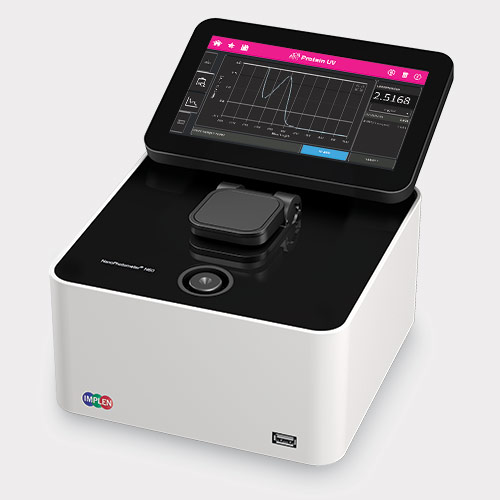
- The conducted research shows excellent linearity of the Implen Protein UV spectrophotomer with a coefficient of determination (R2) of 0.9997 over the whole dynamic range for protein samples.
- The data demonstrates that two precisely defined path lengths are sufficient for this excellent precision and linearity. The sealed mechanical setup of the Implen NanoPhotometer® with two fixed anchor points guarantees accurate performance every time a sample is measured.
- The results clearly show that across the detection limits of the NanoPhotometer® NP80 precision and linearity of the instrument is highly reliable.
The presented data illustrate the high accuracy and linearity of the Implen NanoPhotometer®, best in class Protein UV spectrophotometer, across the entire dynamic range of the instrument. With this novel approach of only two precise path lengths with fixed anchor points utilizing the proprietary True Path Technology™ in a sealed optical environment, mechanical changes in the system are eliminated.
For further technical information please refer also to Technical Note #1 True Path Technology™.
NanoPhotometer® Models that Work Best for Protein UV Quantification
All units are battery powered and require NO maintenance or recalibration for a lifetime. They also can be used for the following applications: dsDNA, ssDNA, RNA, mRNA, miRNA, Oligos, Proteins and Antibodies including dye labeled samples, small molecules in organic solvents, kinetics in a drop and more.
|
|
|
|
“Great results and very accurate!”
Rating: 5.0 ★★★★★
Application Area: Protein assays and concentrations
“I love love love this machine. It’s portable, idiot proof, and accurate. For its DNA analysis, it is much more accurate than the old familiar, Nanodrop. I love the fact that it is so modifiable and easy to use. We use it for a variety of functions in the lab, including Bradford assays. I really love that there is a built-in graph for these and that you can email it to yourself or save on a USB stick. This machine is the thing we have all been needing but never knew we missed. Also the customer care is outstanding and I look forward to our rep every time she comes.”
Andrea Kuipers
Organization: California Institute of Technology, USA
“Producto NP80-Touch”
Rating: 5.0 ★★★★★
Application Area: Biologia celular y desarrollo
“Es un buen producto que facilita con rapidez y eficacia la medición de ácidos nucleicos y proteínas.”
Dr. Jesus Aguirre
Organization: Instituto de Fisiologia Celular, Mexico
“Great results! will highly recommend it for protein measurements. “
Rating: 4.7 ★★★★★
Application Area: Antibody measurements
“Great product! We use it [NP80] to measure antibody concentration. It is easy and efficient! They also have a great customer care service! The instrument has become an irreplaceable part of our company.”
Veena Kumari
Organization: Neobiotechnologies, USA
“Great machine with great results “
Rating: 4.7 ★★★★★
Application Area: Analysis of RNA, DNA, and protein concentrations
“This is an easy to use machine that gives great results. We have run it against several standard curves. Would definitely recommend it.”
George Perry
Organization: South Dakota State University, USA
“Best small volume spec on the market”
Rating: 5.0 ★★★★★
Application Area: Protein/nucleic acid quantitation
“The Implen NanoPhotometer N50 is extremely easy to use (intuitive menus and settings), accurate, and genuinely capable of measuring very small volumes repeatably. The touch screen works well even with gloves. Window configurations are adaptable so you can customize the information you’re looking at while working. The instrument is light and mobile, and since it’s all-in-one, you can literally move it to where you’re working as needed. It’s not stuck in a particular corner of the lab. In my opinion, it’s the best nano-scale measurement device on the market for routine lab sample quantification and spectral reading.”
David Rawling
Organization: Inflammatix, Inc., USA
“Small but excellent”
Rating: 5.0 ★★★★★
Application Area: Gastroenterologie/Hepatologie, Medizinisches Forschungszentrum
“The N60 is an excellent product for determining concentrations of nucleic acids and proteins. Advantages include the accessibility of measured data, as the device exports measurements as .csv and .pdf files and that the device can be cleaned with 70% Ethanol and water. Plus, it contains an in-built vortexer.”
Dr. Sabrina Rüschenbaum
Organization: Universitätsklinikum Essen AöR, Germany
“A wonderful instrument for nucleotide or protein quantification”
Rating: 5.0 ★★★★★
Application Area: Life Science
“It’s a delicate but powerful instrument which occupies very small space and is always on call.
As soon as one acquires this in his lab, he can enjoy the convenience and accuracy at the same time.”
Yu Ran
Organization: Zhejiang University, China
“Great accuracy of measurements, easy usage, really nice interface.”
Rating: 5.0 ★★★★★
Application Area: determination of the concentration of proteins and nucleic acids solutions
“C40 NanoPhotometer is a great tool to measure macromolecule concentrations in microvolumes. It surpasses our previous nanodrop machine as it does not need calibration and has more functions. Easy interface is a great advantage and the new function of enzyme kinetics together with vortex makes this small and handy tool a multitask help in our lab. The wi-fi functions enables us to print spectra quickly. Measurements are repeatable and accurate. I would recommend the equipment every biochemistry lab.”
Joanna Sliwiak
Organization: Institute of Bioorganic Chemistry, Laboratory of Protein Engineering, USA

